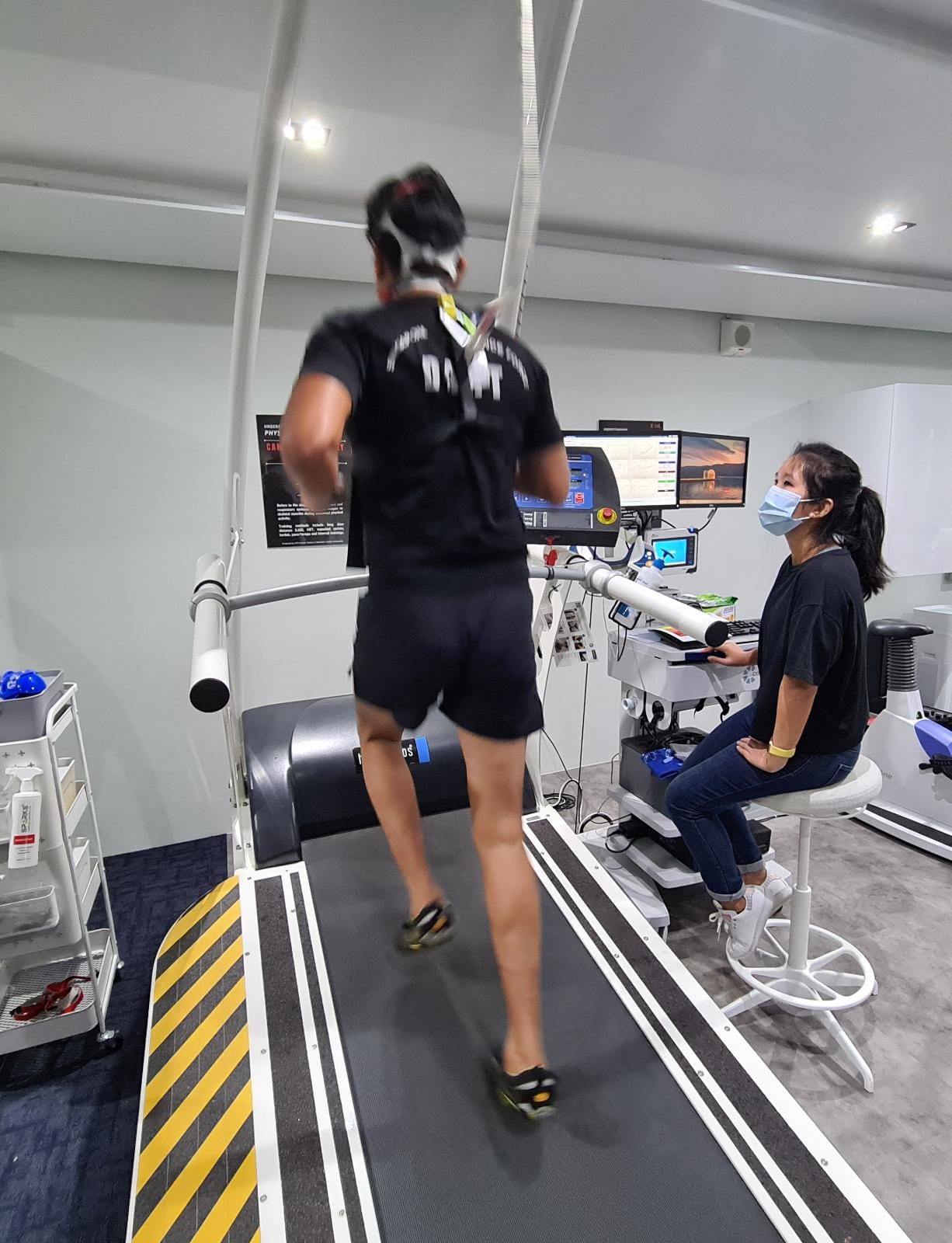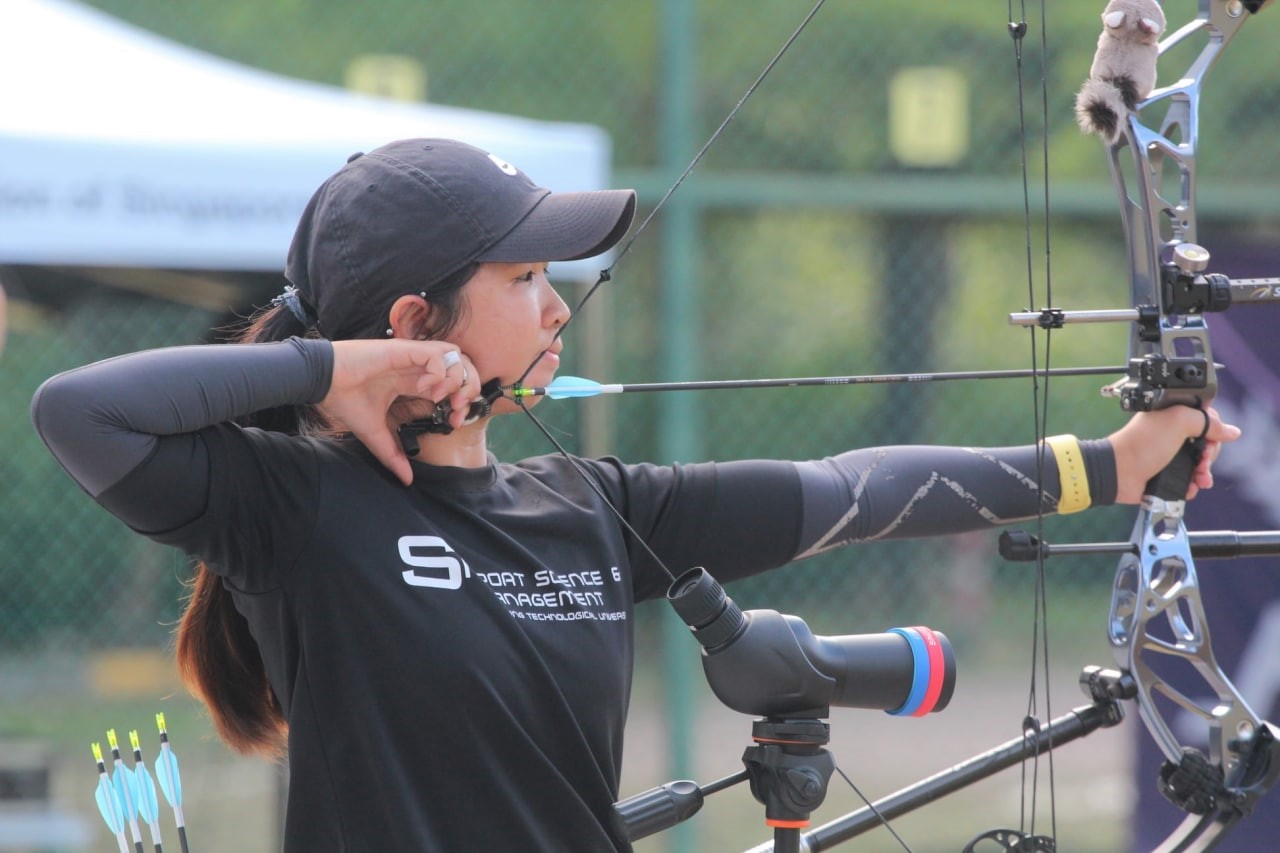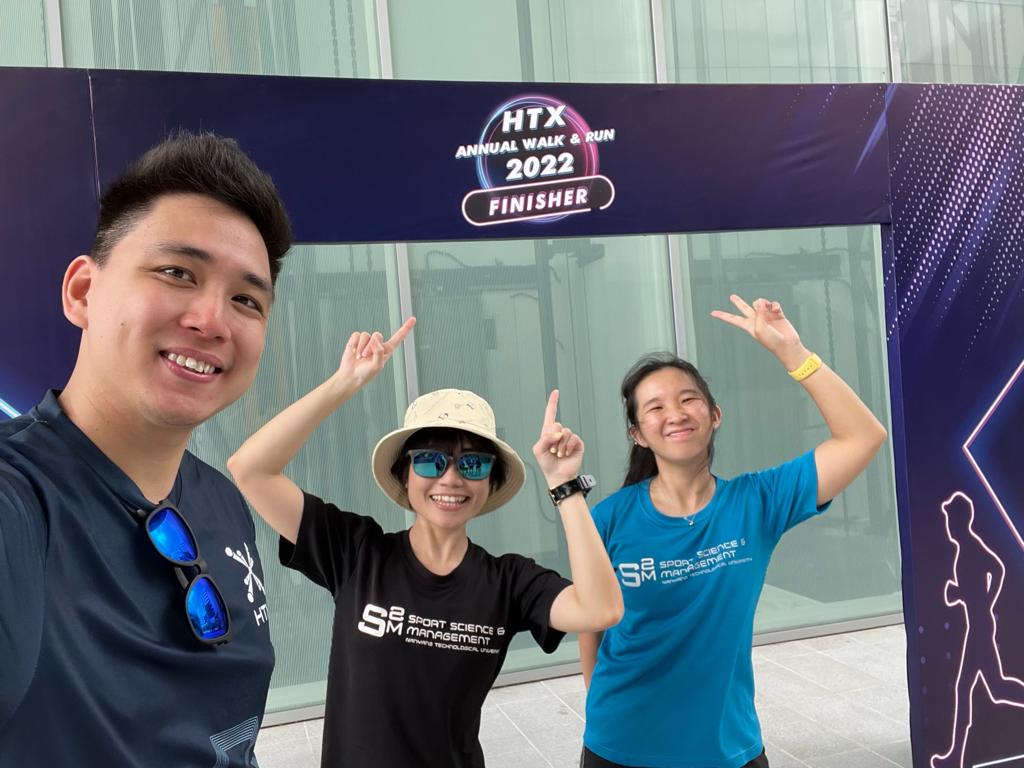We try to protect the people who protect us.
For the firefighters, this meant understanding the movements common to their work and conducting a biomechanical analysis to identify the muscles most used. She and her team then developed a new strength and conditioning programme, Responders Functional Fitness Training (RFFT), to keep the firefighters in top shape.

Part of Keller’s job scope involves carrying out fitness evaluations for SCDF trainees and firefighters. Here, she is conducting a test to evaluate the cardiorespiratory endurance of a Disaster Assistance and Rescue Team personnel. (Photo: Keller Chai)
In another ongoing project, Keller worked on a wearable for the Singapore Police Force (SPF). Like other smart watches on the market, it measures physiological signals such as heart rate. But it connects each trainee’s readings to a central dashboard so officers can monitor if someone is overexerted or if they need to push themselves harder to reap the benefits of training.
“If we rely on self-motivation or eyeballing, we won’t have objective benchmarks to know what someone can or cannot handle,” she explains. “So the wearable helps with safety and training efficiency.”
From drawbacks to bounce backs
Keller shares that a common challenge at work is bridging the gap between research findings and implementation of solutions. She cites the RFFT as an example: “I know what science would say the best approach is to achieve the outcome we want, but I can’t expect officers to train like bodybuilders three times a week!”
There are also many moments when the research seems to have reached a dead end and it looks like efforts have been in vain. In such moments, Keller falls back on wisdom she acquired in her days as an archer to carry her through. “My coach used to say, ‘Never give up before the last arrow, because anything can happen’,” she recalls.

Keller used to shoot up to 300 arrows with her 2kg bow in a two-hour practice session when she was a national archer. (Photo: Keller Chai)
She admits that these words are true in many aspects of her life — starting when she was diagnosed with leukaemia at the age of six. She had to undergo three cycles of chemotherapy over two years, during which she lived with a portacath, a device that connects to her central vein in her chest. She persevered and eventually beat the disease.
Later, when Keller took up archery, she struggled to even hold the 2kg bow. Again, she persisted, shooting up to 300 arrows in two hours at each practice session and going to the gym for strength and conditioning regularly. In end-2017, she made the national team and won two medals (a bronze and a silver) at the ASEAN University Games in 2018. She also represented Singapore at the 2022 SEA Games.
“I think that when you have come so close to death, you will feel a new hunger for life. I don't feel like I want to squander my second chance, my second shot at life, by being mediocre,” she says by way of explanation.
Shooting a new arrow of excellence
Keller has brought the same drive for excellence to her work in the HTX Associate Programme. Besides daily research and testing, she has attended training courses such as the Home Team Foundation Course to improve her knowledge of the Home Team's different departments and expand her professional networks.

Despite having retired from archery, Keller (right) continues to keep fit by participating in HTX’s sports events such as the HTX Annual Walk & Run, with her colleagues. (Photo: Keller Chai)
The rigour at work is different from her training as a national athlete, but 10 months in and counting, she is excited about what the future holds.
“I like the opportunities HTX offers and that they have a roadmap for our development,” she enthuses. She adds, “My colleagues are amazing and smart people who are passionate about applying their knowledge.” Their work ethic stood out to her when she was interning at HTX, and even today, this remains her source of motivation.
With the support of her team, Keller looks forward to a fruitful career where she combines sports with science to optimise human performance and force multiply the power of the Home Team.
Looking for an avenue to pursue your passion in science like Keller has? Find out more about the HTX Associate Programme here.